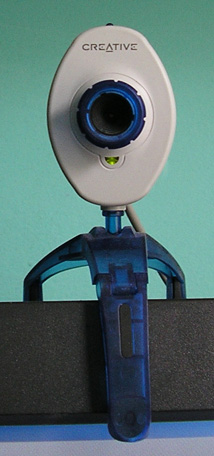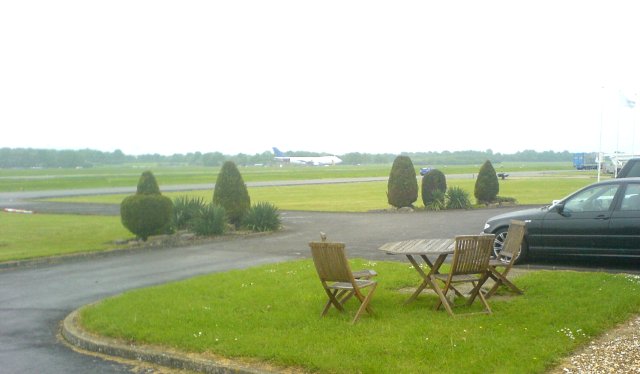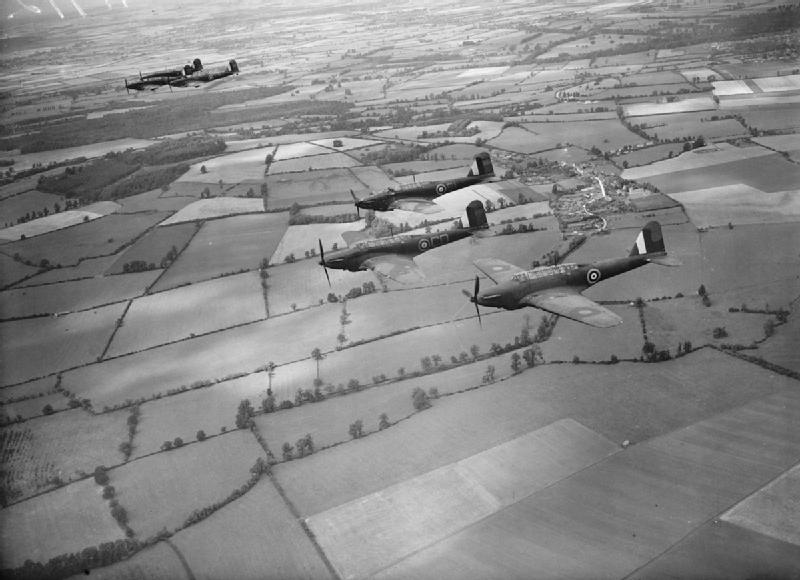|
Aston Down
Aston Down is in Gloucestershire, South West England, east of Minchinhampton, southeast of Stroud and west of Cirencester. The nearest settlement is the large village of Chalford, 1 mile (1.6 km) to the northwest. The airfield was used by the Royal Air Force from the First World War until 1967 when the Cotswold Gliding Club moved in from their previous base near Tetbury. In 2002 the land and most of hangars surrounding the airfield were sold by the Ministry of Defence to private developers for use as industrial units. History First World War The airfield was originally opened as RAF Minchinhampton and was first used in the First World War, serving as an aerodrome for the Australian Flying Corps with No. 2 Squadron AFC flying the Royal Aircraft Factory S.E.5a and the Sopwith Pup and No. 3 Squadron AFC flying the Avro 504. The airfield closed shortly afterwards. Reopening In 1938 the airfield reopened under the new name of RAF Aston Down at the request of the resident ... [...More Info...] [...Related Items...] OR: [Wikipedia] [Google] [Baidu] |
Cotswold Gliding Club
The Cotswold Gliding Club (CGC) is based at Aston Down airfield, between Cirencester and Stroud, Gloucestershire, Stroud in Gloucestershire, South West England. The club maintains a fleet of aircraft for training purposes, and is a centre for Gliding#Cross-country, cross-country gliding and Gliding competitions, competitions. Club CGC was formed in 1964. It was initially based at Long Newnton airfield near Tetbury, but in 1967 moved to its current home, Aston Down—at that time still a military airfield. In 1980-1, with the help of Sports Council grants and other loans, the club purchased a large part of the airfield when it was auctioned off by the Ministry of Defence (United Kingdom), Ministry of Defence. Having since acquired further land, CGC now owns most of the airfield within the perimeter track. CGC has some 200 members, including 80 students from the University of the West of England (UWE) in Bristol. There are about 30 associate members: these include both pilots ( ... [...More Info...] [...Related Items...] OR: [Wikipedia] [Google] [Baidu] |
Hawker Hurricane
The Hawker Hurricane is a British single-seat fighter aircraft of the 1930s–40s which was designed and predominantly built by Hawker Aircraft Ltd. for service with the Royal Air Force (RAF). It was overshadowed in the public consciousness by the Supermarine Spitfire during the Battle of Britain in 1940, but the Hurricane inflicted 60 percent of the losses sustained by the Luftwaffe in the campaign, and fought in all the major theatres of the Second World War. The Hurricane originated from discussions between RAF officials and aircraft designer Sir Sydney Camm about a proposed monoplane derivative of the Hawker Fury biplane in the early 1930s. Despite an institutional preference for biplanes and lack of interest by the Air Ministry, Hawker refined their monoplane proposal, incorporating several innovations which became critical to wartime fighter aircraft, including retractable landing gear and the more powerful Rolls-Royce Merlin engine. The Air Ministry ordered Hawker's ''Int ... [...More Info...] [...Related Items...] OR: [Wikipedia] [Google] [Baidu] |
RAF Kemble
Kemble may refer to: Places * Kemble, Gloucestershire, a village in England ** Kemble railway station ** Cotswold Airport (formerly Kemble Airfield and RAF Kemble) ** Kemble Air Show, former name of the Cotswold Air Show * Kemble, Ontario, Canada * Battery Kemble Park, Washington, DC, United States People * Adelaide Kemble (1815–1879), opera singer * Arthur Kemble (1862–1925), English cricketer and rugby union player * C. C. Kemble (born 1831), American architect * Charles Kemble (1775–1854), British actor * E. W. Kemble (1861–1933), illustrator of Mark Twain books * Edwin C. Kemble (1889–1984), American physicist * Fanny Kemble (1809–1893), English actress who became a writer and an anti-slavery activist * Gary Kemble, New Zealand rugby league footballer and coach * Gouverneur Kemble (1786–1875), American ironmaster * Henry Kemble (1848–1907), actor * Henry Stephen Kemble (1789–1836), British actor * John Kemble (martyr) (1599–1679), English Roman Catholic ... [...More Info...] [...Related Items...] OR: [Wikipedia] [Google] [Baidu] |
Airfields Of Britain Conservation Trust
The Airfields of Britain Conservation Trust (ABCT), founded 2006, is a non-profit organisation that works to preserve and protect airfields in Great Britain, as well as educating people about their history. The Trust is a registered charity. They place inscribed memorial stones on or near disused airfields, which have included a memorial at Fambridge, Essex in February 2009, at Windermere in Cumbria in 2011 and at Montrose Air Station Heritage Centre in May 2012. Other memorial locations include Harrowbeer, Hatfield, Lanark, Leavesden, Matlaske, Okehampton, Podington, Swannington, Westcott and Woburn Park Woburn Abbey (), occupying the east of the village of Woburn, Bedfordshire, England, is a country house, the family seat of the Duke of Bedford. Although it is still a family home to the current duke, it is open on specified days to visitors, .... References External links * Charities based in Glasgow Conservation in the United Kingdom Aviation history of ... [...More Info...] [...Related Items...] OR: [Wikipedia] [Google] [Baidu] |
De Havilland Mosquito
The de Havilland DH.98 Mosquito is a British twin-engined, shoulder-winged, multirole combat aircraft, introduced during the Second World War. Unusual in that its frame was constructed mostly of wood, it was nicknamed the "Wooden Wonder", or "Mossie". Lord Beaverbrook, Minister of Aircraft Production, nicknamed it "Freeman's Folly", alluding to Air Chief Marshal Sir Wilfrid Freeman, who defended Geoffrey de Havilland and his design concept against orders to scrap the project. In 1941, it was one of the fastest operational aircraft in the world.Bowman 2005, p. 21. Originally conceived as an unarmed fast bomber, the Mosquito's use evolved during the war into many roles, including low- to medium-altitude daytime tactical bomber, high-altitude night bomber, pathfinder, day or night fighter, fighter-bomber, intruder, maritime strike, and photo-reconnaissance aircraft. It was also used by the British Overseas Airways Corporation as a fast transport to carry small, high-value c ... [...More Info...] [...Related Items...] OR: [Wikipedia] [Google] [Baidu] |
North American B-25 Mitchell
The North American B-25 Mitchell is an American medium bomber that was introduced in 1941 and named in honor of Major General William "Billy" Mitchell, a pioneer of U.S. military aviation. Used by many Allied air forces, the B-25 served in every theater of World War II, and after the war ended, many remained in service, operating across four decades. Produced in numerous variants, nearly 10,000 B-25s were built. These included several limited models such as the F-10 reconnaissance aircraft, the AT-24 crew trainers, and the United States Marine Corps' PBJ-1 patrol bomber. Design and development The Air Corps issued a specification for a medium bomber in March 1939 that was capable of carrying a payload of over at North American Aviation used its NA-40B design to develop the NA-62, which competed for the medium bomber contract. No YB-25 was available for prototype service tests. In September 1939, the Air Corps ordered the NA-62 into production as the B-25, along with the ... [...More Info...] [...Related Items...] OR: [Wikipedia] [Google] [Baidu] |
RAF Dunsfold
Dunsfold Aerodrome (former ICAO code EGTD) is an unlicensed airfield in Surrey, England, near the village of Cranleigh. It extends across land in the villages of Dunsfold and Alfold. It was built by the Canadian Army and civilian contractors as a Class A bomber airfield for Army Co-operation Command. It was commanded by the Royal Canadian Air Force from 1942 to 1944 and was known as Royal Canadian Air Force Station Dunsfold. Under RAF control it was RAF Dunsfold. Post-war it was used by Hawker Siddeley and then its successor British Aerospace. From 2002 to 2020, it was used as the main site of the BBC show ''Top Gear''. History Construction and military use Canadian engineers were charged with the construction of the aerodrome. Such projects had previously taken up to a year to complete and this site was complicated by the two hundred acres of woodland that first had to be cleared. The Canadian sappers had access to large-scale earth moving equipment from North America o ... [...More Info...] [...Related Items...] OR: [Wikipedia] [Google] [Baidu] |
RAF Charmy Down
RAF Charmy Down is a former Royal Air Force (RAF) station in Somerset, England, approximately north-northeast of Bath and west of London. Opened in 1941, it was used initially by the RAF and from 1943 by the United States Army Air Forces, primarily as a night fighter interceptor airfield. It was closed in 1946. Today the remains of the airfield are on private property and are used as agricultural fields. History A kerbed long barrow site was flattened to make way for the airfield. A cremation urn had been found near a burial of a long necked beaker and a bronze dagger, believed to be from the Beaker people. The airfield was planned as a satellite for the Maintenance Unit at nearby RAF Colerne, but by the time construction work started in 1940 it had been selected as a sector station by No. 10 Group of RAF Fighter Command. RAF Charmy Down was opened late in 1940 and originally had a grass surface with landing strips of , both southeast to northwest and northeast to southwes ... [...More Info...] [...Related Items...] OR: [Wikipedia] [Google] [Baidu] |
Supermarine Spitfire
The Supermarine Spitfire is a British single-seat fighter aircraft used by the Royal Air Force and other Allied countries before, during, and after World War II. Many variants of the Spitfire were built, from the Mk 1 to the Rolls-Royce Griffon engined Mk 24 using several wing configurations and guns. It was the only British fighter produced continuously throughout the war. The Spitfire remains popular among enthusiasts; around 70 remain airworthy, and many more are static exhibits in aviation museums throughout the world. The Spitfire was designed as a short-range, high-performance interceptor aircraft by R. J. Mitchell, chief designer at Supermarine Aviation Works, which operated as a subsidiary of Vickers-Armstrong from 1928. Mitchell developed the Spitfire's distinctive elliptical wing with innovative sunken rivets (designed by Beverley Shenstone) to have the thinnest possible cross-section, achieving a potential top speed greater than that of several contemporary figh ... [...More Info...] [...Related Items...] OR: [Wikipedia] [Google] [Baidu] |
RAF Debden
Royal Air Force Debden or more simply RAF Debden is a former Royal Air Force station located southeast of Saffron Walden and approximately north of the village of Debden in North Essex, England History The airfield was opened in April 1937 and was first used by the Royal Air Force. One of Debden's early and most bizarre experiences was when the airfield was chosen as a location for the film "It's in the Air" in which George Formby was to pilot a Hawker Fury through Hangar No. 3. The rather sharper angle of the hangars at Debden built around the tarmac apron allowed free access at both ends of the end hangar. The flying for the sequence was actually done by Flying Officer R. H. A. Lee who disappeared on 18 August 1940 when he was last seen ten miles north of Foulness Point chasing three German aircraft out to sea. RAF Fighter Command use Hard surface runways were laid in 1940. During the early years of the Second World War it was a Sector Station, with an Operations Block ... [...More Info...] [...Related Items...] OR: [Wikipedia] [Google] [Baidu] |
RAF Benson
Royal Air Force Benson or RAF Benson is a Royal Air Force (RAF) station located at Benson, near Wallingford, in South Oxfordshire, England. It is a front-line station and home to the RAF's fleet of Westland Puma HC2 support helicopters, used primarily for the transportation of troops & equipment. Flying squadrons comprise No. 33 Squadron & No. 230 Squadron flying the Puma, No. 22 Squadron which provides operational evaluation and training for all aircraft in Joint Helicopter Command and No. 28 Squadron, which is the combined Puma and Boeing Chinook HC6A training unit. Other units include the Oxford University Air Squadron and No. 6 Air Experience Flight, both flying the Grob Tutor T1 light training aircraft used for student and cadet flying training. The National Police Air Service and the Thames Valley Air Ambulance are also based at the station, both operating Airbus H135 helicopters. RAF Benson opened in 1939 and during the Second World War it was tasked with tra ... [...More Info...] [...Related Items...] OR: [Wikipedia] [Google] [Baidu] |
Air Transport Auxiliary
The Air Transport Auxiliary (ATA) was a British civilian organisation set up at the start of the Second World War with headquarters at White Waltham Airfield in Berkshire. The ATA ferried new, repaired and damaged military aircraft between factories, assembly plants, transatlantic delivery points, maintenance units (MUs), scrapyards, and active service squadrons and airfields, but not to naval aircraft carriers. It also flew service personnel on urgent duty from one place to another and performed some air ambulance work. Notably, around 10% of its pilots were women, and from 1943 they received equal pay to their male colleagues, a first for the British government. Mission The initial plan was that the ATA would carry personnel, mail and medical supplies, but the pilots were immediately needed to work with the Royal Air Force (RAF) ferry pools transporting aircraft. By 1 May 1940 the ATA had taken over transporting all military aircraft from factories to maintenance units to have gu ... [...More Info...] [...Related Items...] OR: [Wikipedia] [Google] [Baidu] |


.jpg)



.png)
